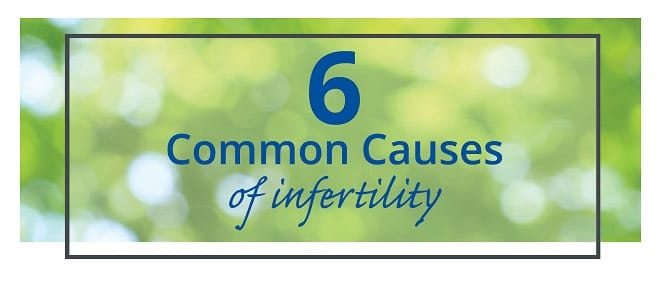
By Dr Anne Poliness, Clinical Director at City Fertility Centre Melbourne.
While there are many and varied problems that can affect a person’s ability to fall pregnant, some are more common than others. The good news is that there are several treatment options available that can often help to put you on a new, more positive journey towards parenthood.
Below, I have listed some of the more common fertility concerns I come across and the treatment options available.
1. PCOS
Polycystic ovary syndrome (PCOS) is a condition where the ovaries secrete abnormally high amounts of androgens (male hormones) that often cause problems with ovulation. Women with PCOS have enlarged ovaries that contain multiple small cysts.
Treatment:
If fertility is the main priority, treatment with medication to assist in ovulation can be given. Metformin can increase the body’s sensitivity to insulin, leading to regular ovulation. Ovulation may also be induced with clomiphene. Up to 80 per cent of women using clomiphene will have success in ovulating, resulting in pregnancy rates comparable to that of the general population. In vitro fertilisation (IVF) is usually only offered to women with PCOS who want to conceive when other treatments have failed. Obesity is often a common factor in women with PCOS, so diet and exercise are recommended for weight loss if required, which can in turn assist in improving the frequency of ovulation and spontaneous conception with better pregnancy outcomes.
2. Endometriosis
Endometriosis results when endometrial-like cells (cells from inside the uterus) grow outside the uterus. Distortion of the anatomy due to endometriosis can block or change the function of the fallopian tubes. The presence of endometriosis can also cause a harmful effect that makes pregnancy less likely to occur – this may occur due to a negative impact on egg development or problems of implantation of an embryo.
Treatment:
Surgery to remove endometriosis can improve the chances of natural conception. Besides surgical treatment, hormone medications that suppress or stop the periods can be effective to treat pain. As these hormones usually also act as contraception, they are only suitable for women not currently wanting to fall pregnant. If laparoscopy and removal of the endometriosis has not achieved a pregnancy, or is unlikely to, then fertility treatments such as Intra-Uterine Insemination (IUI) or IVF can be considered. IVF treatment can bypass damaged or blocked tubes.
3. Fibroids
These non-cancerous masses are found in the uterus or cervix. Uterine fibroids are found in one out of every three or four women in their 30s or 40s. Fibroids can cause tubal blockages, prevent the embryo from attaching to the uterine wall and cause miscarriage. Fibroids’ impact on fertility depends upon their size and location. Most fibroids do not need surgery.
Treatment:
Surgery to remove fibroids that are disrupting or distorting the uterine lining can improve conception. The pros and cons of surgery on the uterus should always be carefully considered as there is a small risk of hysterectomy (removal of the uterus).
4. Blocked fallopian tubes
When fallopian tubes are blocked or kinked, the egg can be prevented from meeting the sperm. It is often caused by either endometriosis or previous pelvic infections.
Treatment:
Surgery to remove external scarring that is blocking the tubes can improve the chances of conception. If the delicate tubal tissue has been irreparably damaged then surgery may not be possible and IVF treatment that can bypass damaged or blocked tubes could be a good option.
5. Irregular cycles
Irregular menstrual cycles may suggest a problem with ovulation. The female menstrual cycle is determined by a complex interaction of hormones, so any hormone imbalance can make your period irregular. Although, in most cases, irregular cycles are not dangerous, it is important to determine what is causing the irregularity.
Treatment:
Treatment often involves the use of medication (Clomid or follicle stimulating hormone) to stimulate the ovaries and encourage or regulate ovulation. Ovulation induction is sometimes combined with Intra-Uterine Insemination – a procedure in which sperm is directly inserted into a woman’s uterus to improve the likelihood of fertilisation. In some cases when a person is underweight or overweight, it can also affect regular ovulation, so a change to diet and exercise to achieve an optimal body mass index (BMI) is recommended.
6. Age
A woman’s age is a significant factor and often the most important indicator of her chances of conceiving. Egg quality and quantity begins to decline with age. Conception rates for normal healthy couples are, at best, 20-25 per cent per menstrual cycle. Once a woman reaches the age of 30, her fertility begins to decline. By age 40, it is estimated that her natural conception rate is in the range of 5-8 per cent per month for the first 6 months, then much lower after that and at age 43, the pregnancy rate is thought to be as low as 1-3 per cent per month.
Treatment:
If you are under 35 and have been unsuccessfully trying to fall pregnant for 12 months, or over 35 and have been trying for 6 months, it is recommended you seek help from a specialist in fertility. While age cannot be reversed, assisted fertility options can be fast tracked if there are no other obvious medical problems that could be impacting on fertility.
When to Seek Fertility Advice
If you are experiencing difficulties falling pregnant, it is important to understand that sometimes it does take time. My recommendation is to seek advice if you have been unsuccessful after 12 months of trying if you are under 35 years old, or after six months if you are over 35.
If you do go down the path of seeking professional fertility advice, it is important that you first undergo a thorough assessment and investigations to try to confirm the cause of your fertility issues.
Be reassured that just because you may be having difficulties falling pregnant it does not necessarily mean you will need IVF. As outlined above, a number of treatment options are available, depending on the cause.
For more information about Dr Anne Poliness, please visit Dr Anne Poliness website at drannepoliness.com.au
Image courtesy of Shutterstock.com















